Quick Start (Windows)
This page provides a quick start guide on using Face Login on Windows OS.
For ordering subscriptionFeel free to get free trials.
Please contact JCV sales to make paid subscriptions.
The online subscription will be available soon.
Create a service instance (Admin)
To start using Face Login, you must have a service instance first.
- Sign in to the management console of JCV Cloud (https://cloud.japancv.co.jp/en/signin).
The dashboard screen appears.
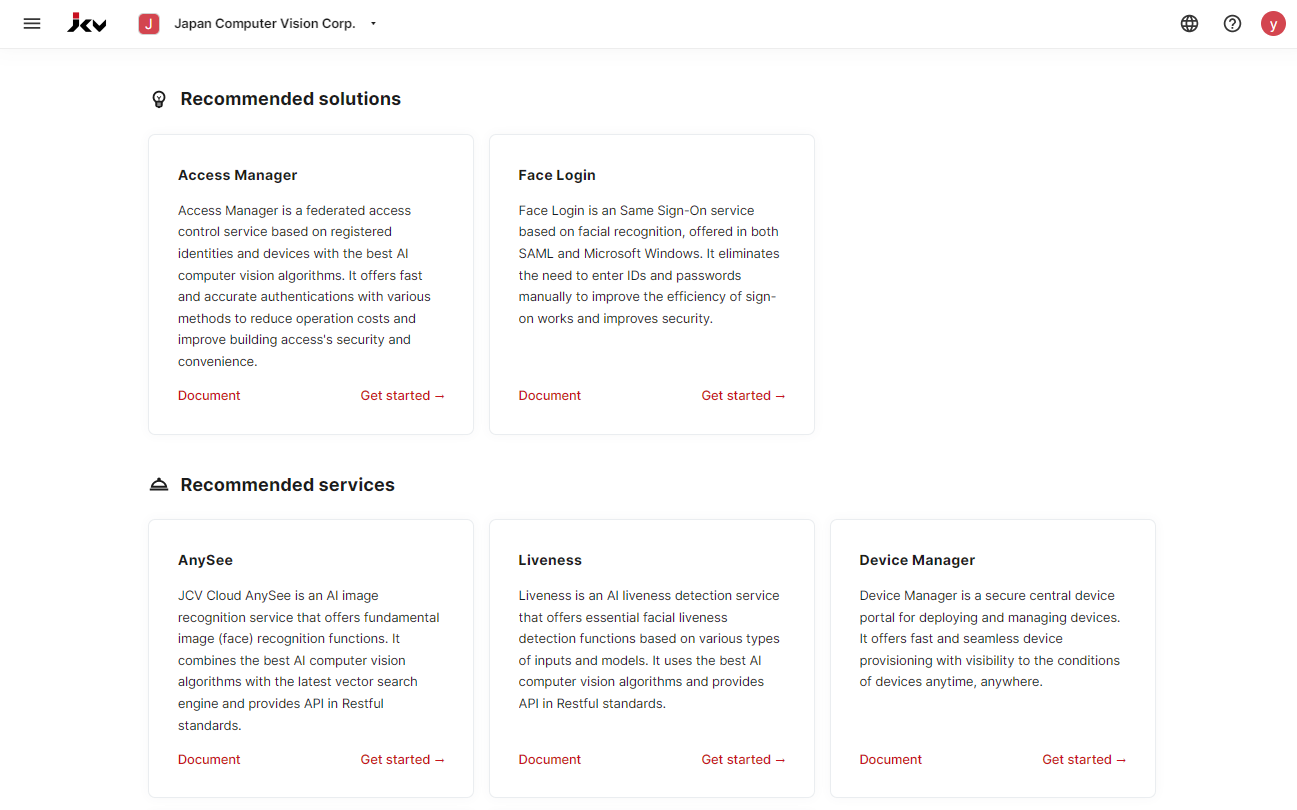
Dashboard
- Click the hamburger button to show the list of services.
Click Solutions - Face Login to enter the initial setup page of Face Login.
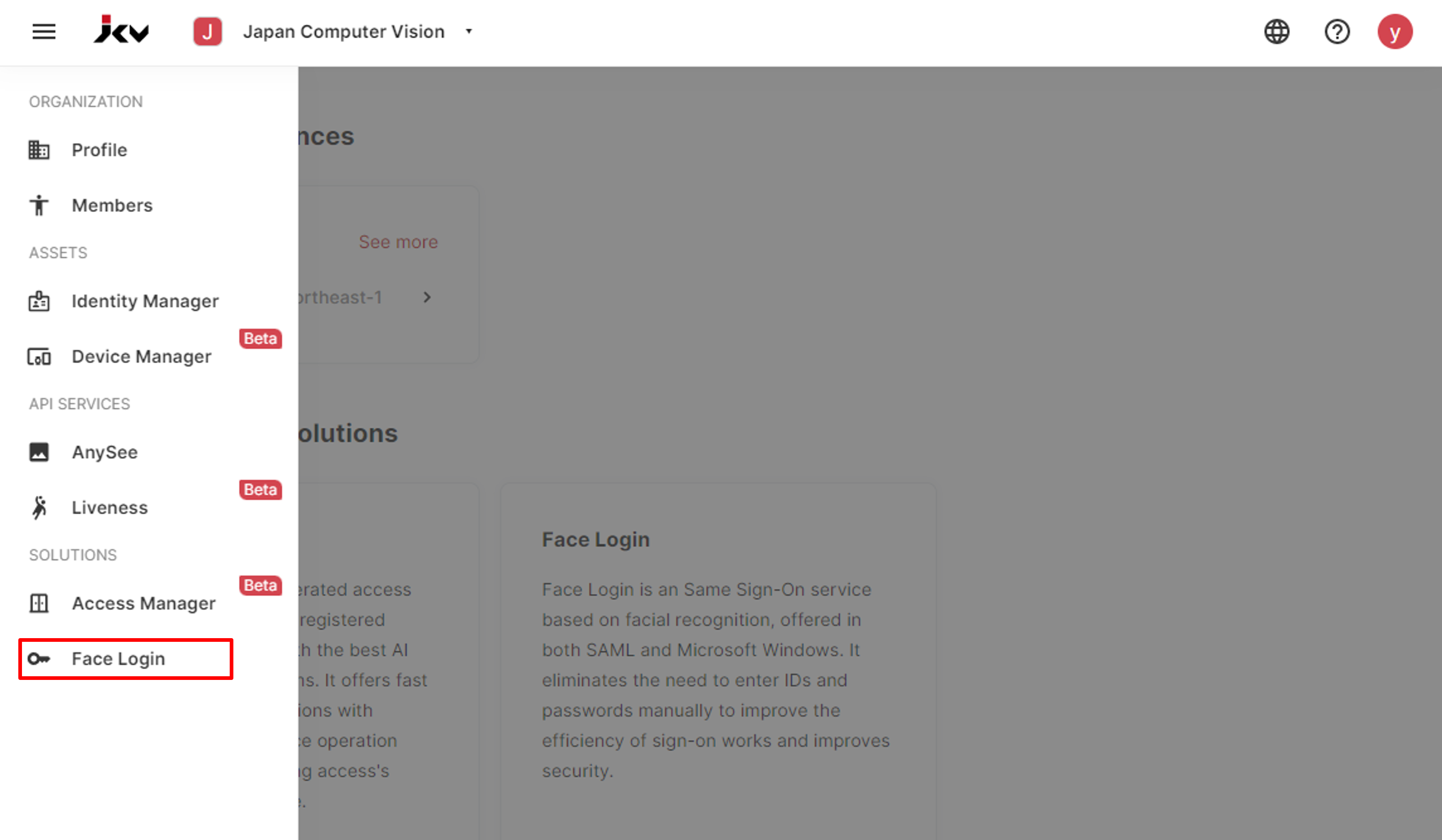
Service list
- On the service instance creation page, select the service region, select the service plan, enter a service instance name, and check the "I agree to the JCV Cloud Service Terms of Use". Then click the Add instance button to finish creating a service instance.🎉
About Identity Manager instancesTo start an Face Logininstance, an unintegrated Identity Manager instance is required. That is to say, one Identity Managerinstance can be integrated with only one Face Logininstance, and that one Face Logininstance can be constructed based on only one Identity Managerinstance.
The above process will automatically create a new identity instance. If you want to build based on an existing Identity Manager instance, you can manually choose one in the advanced options.
Once an Identity Managerinstance has been used in another Face Logininstance, it will not be displayed in the dropdown list here.
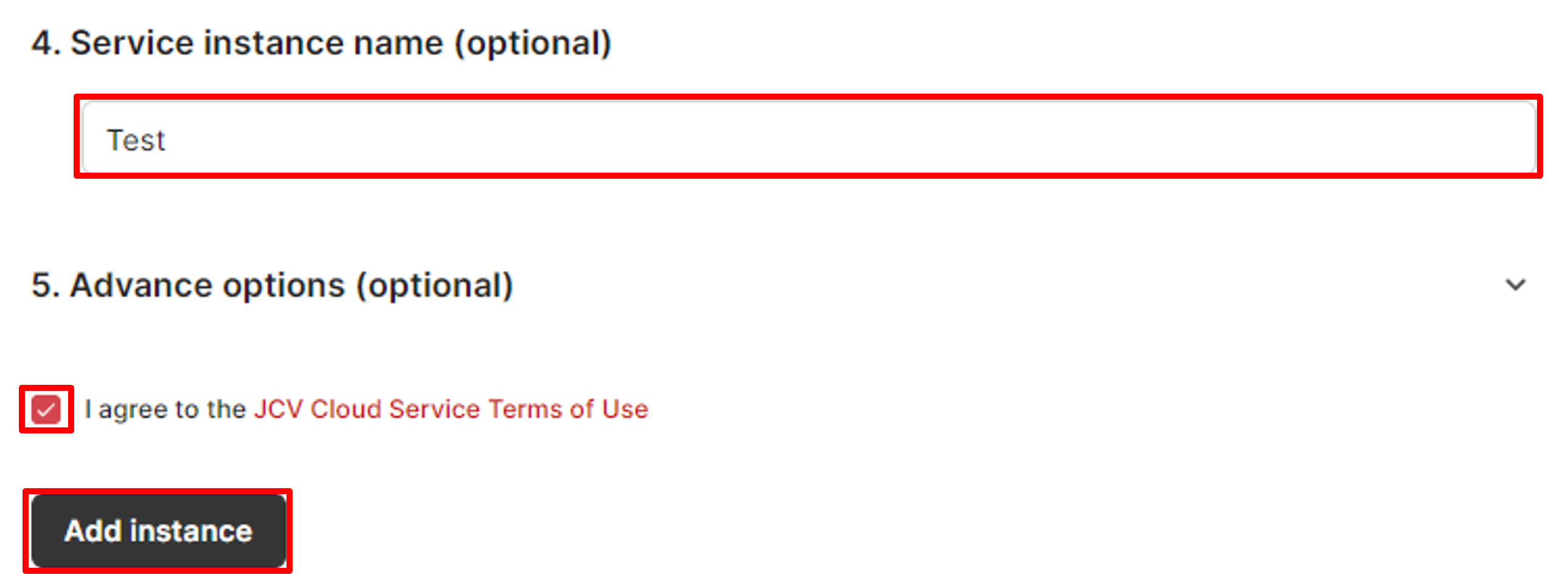
Add an instance
Create a Windows client (Admin)
After creating a service instance, you need a valid Windows client to use the Face Login service.
- Select the service instance created on the Face Login entrance page, and the client list screen appears. Click the instance tab to display the details of the target instance.
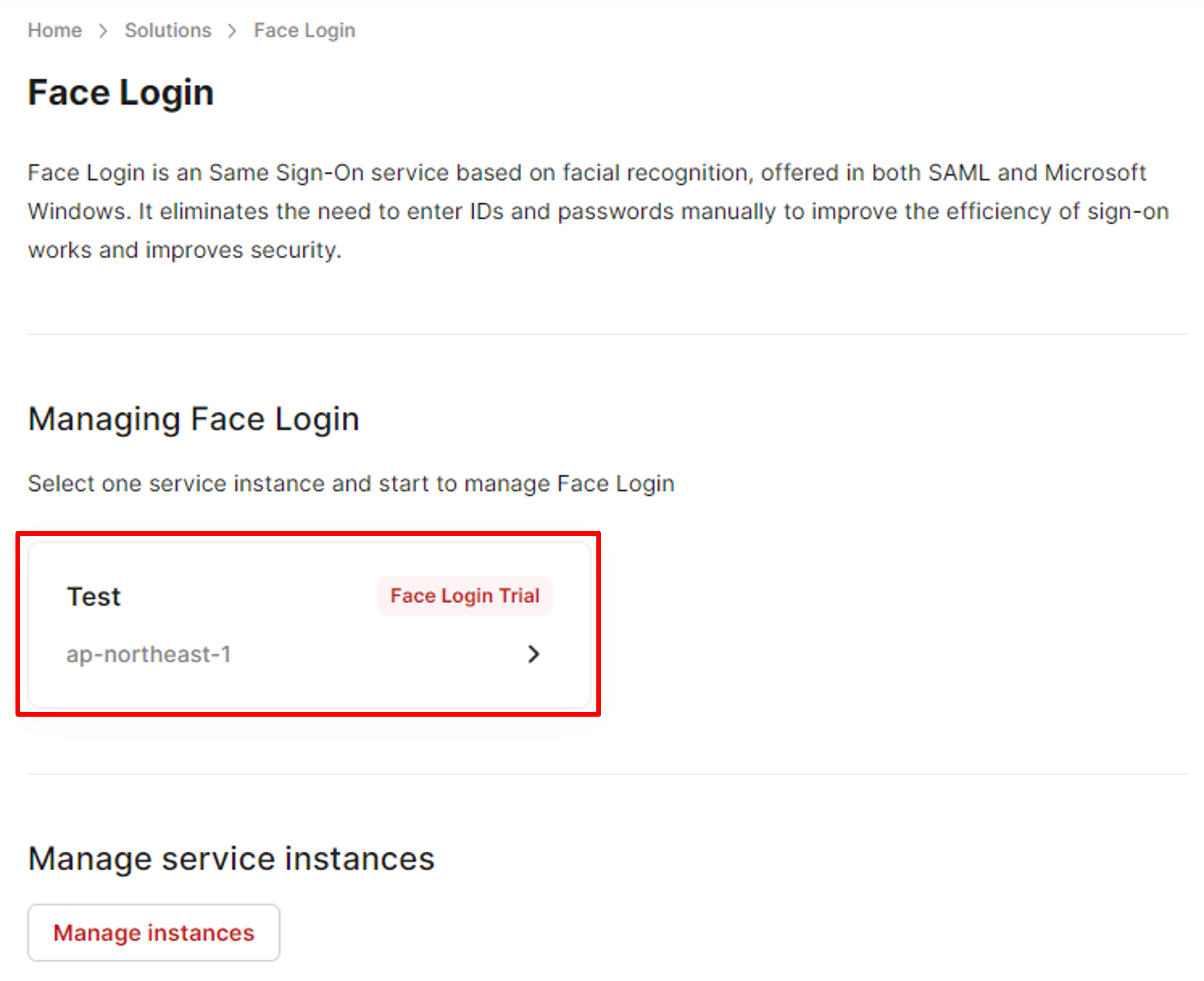
Select an instance
- Click the Add client tab to add a client on the client list screen.
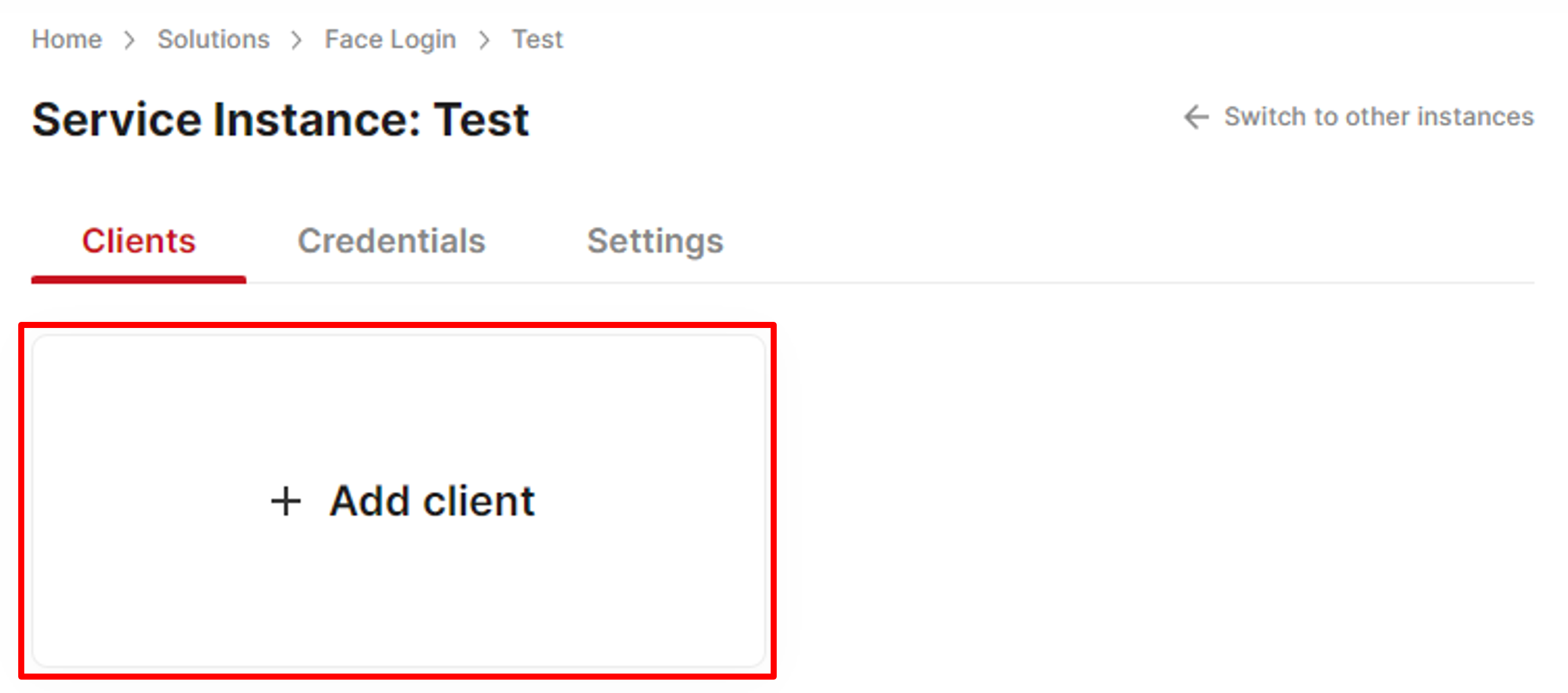
Add a client
- On the Add client screen, select Windows for protocol, enter a name for the client, and click Add to finish adding a client.
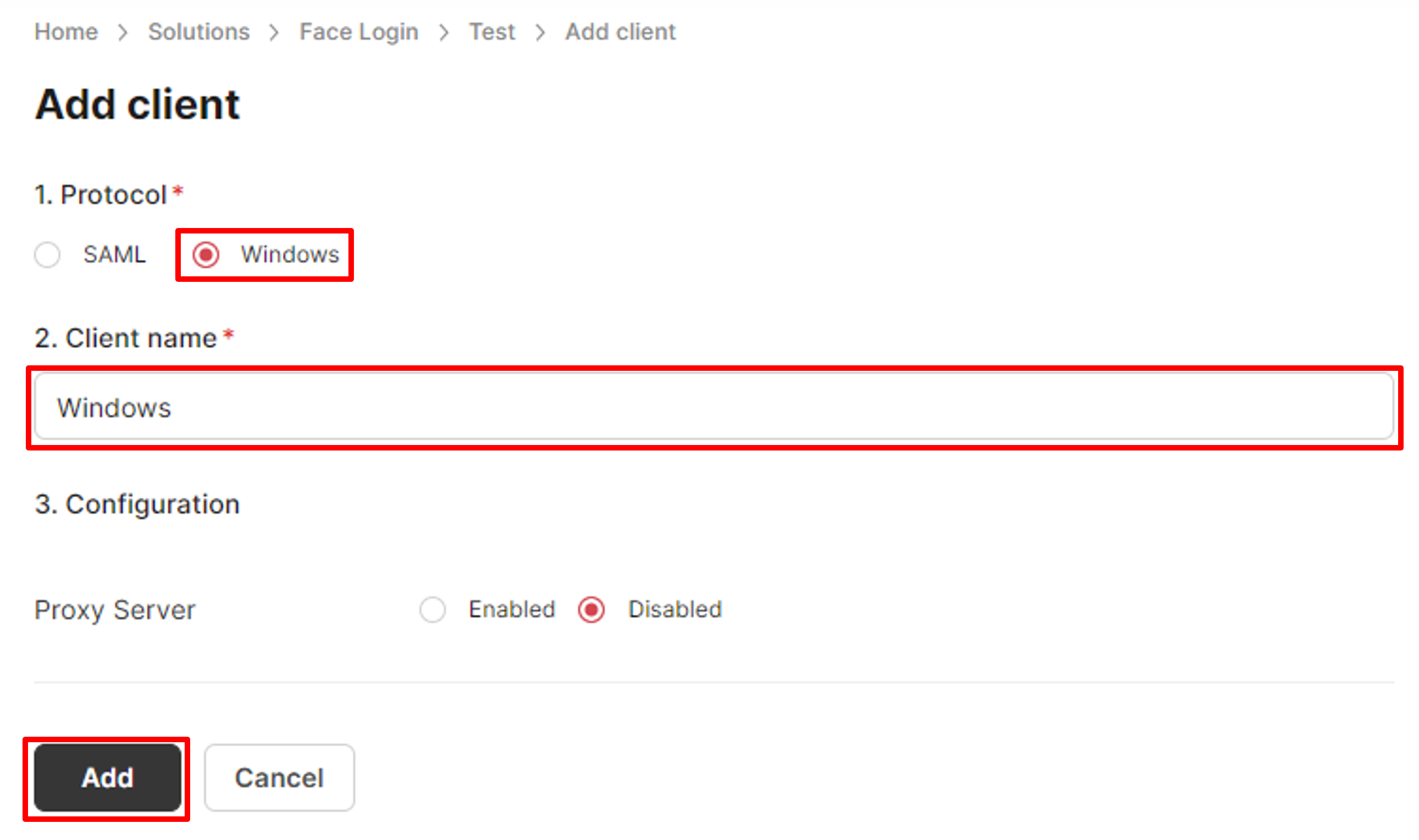
Add client for Windows
- After the client is created, click the client again and the edit client page appears.
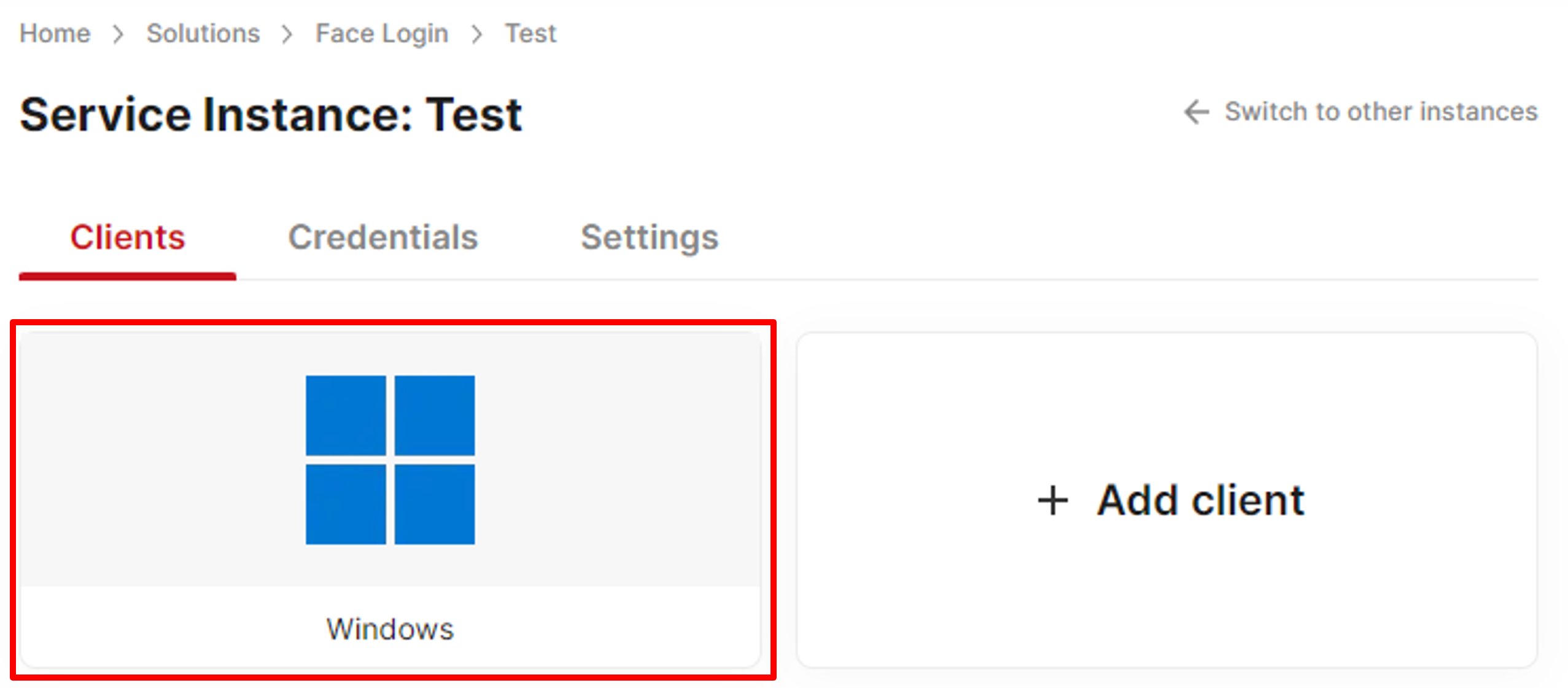
Select Windows client
- Click the Download button to retrieve the config file for Windows APP installation.
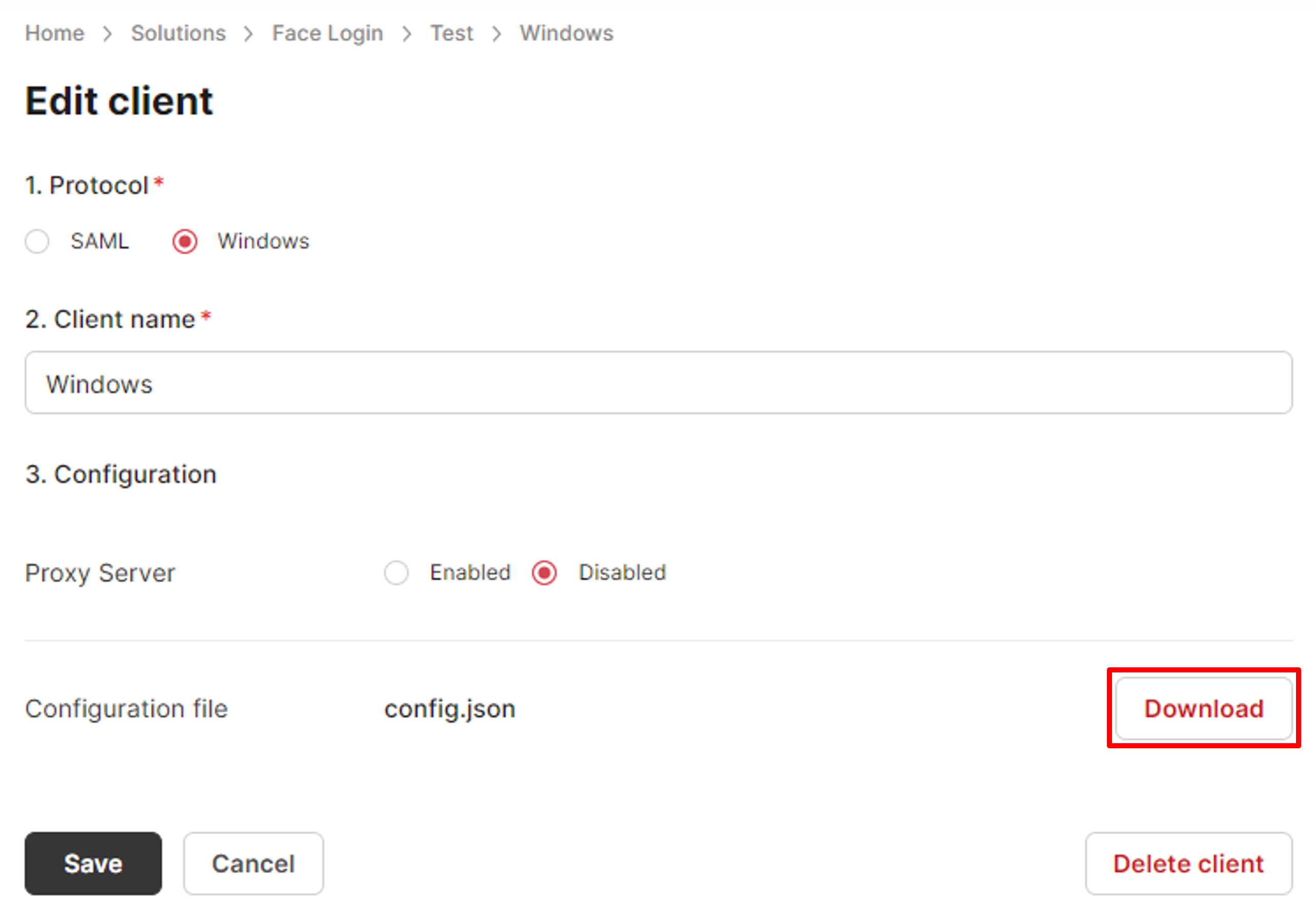
Download the config file
Install the Windows APP (Admin)
Download the latest version of JCV Face Login for Windows Installer from the resource download page.
Place the installer file and the config.json file in the same directory and execute the installer as administrator.
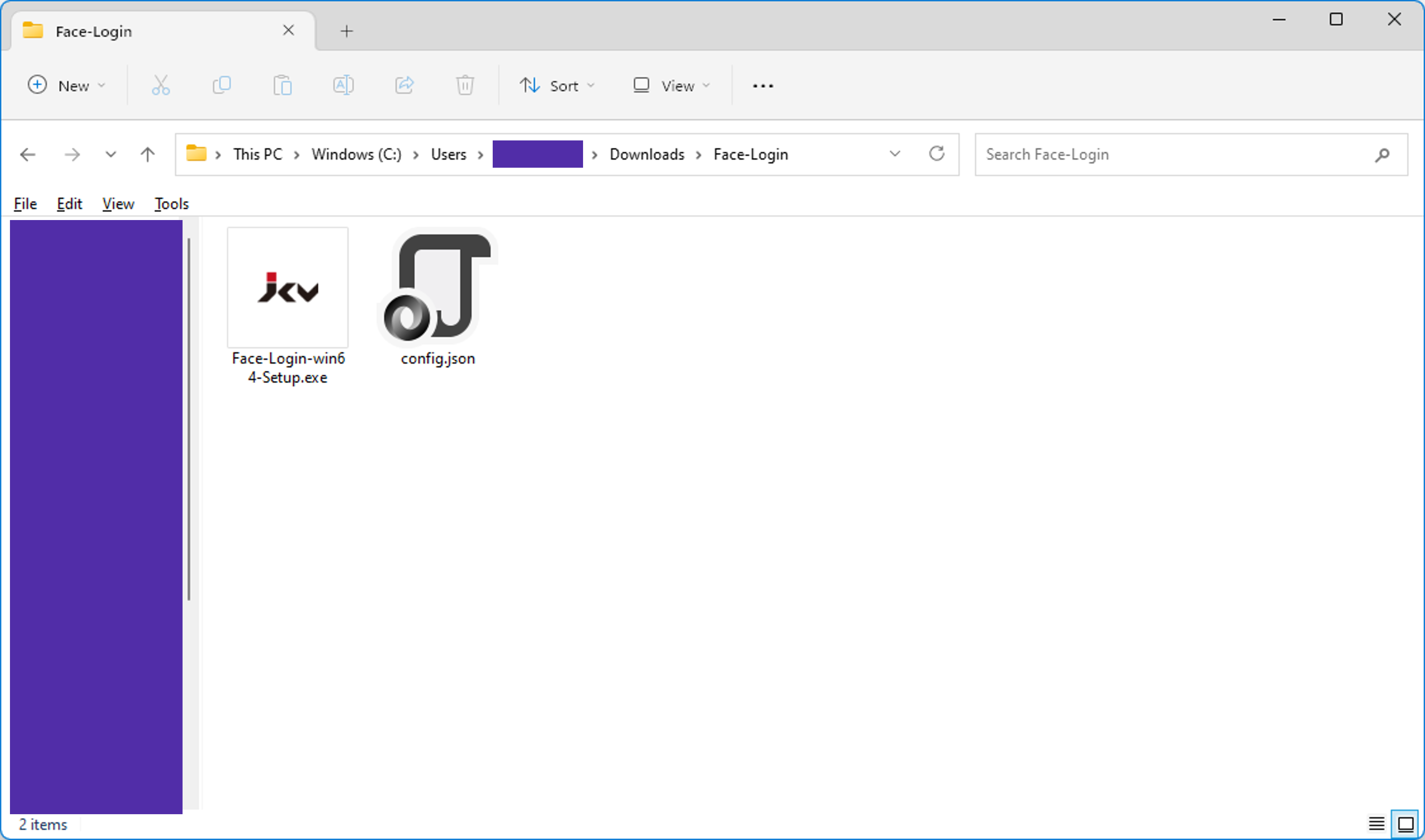
Place the installation file in the same directory
The installation process is silent installation. You can execute it by double click the exe file or run in the command prompt as administrator.
Face-Login-win64-Setup.exeThe preparation for admin is finished. Each end-user needs to set up their own connection information when starting the Windows OS next time.
Add identities in Identity Manager (Admin)
To allow end-users to use their faces to execute log-in, you must first register their face photos as identities first.
- Click the hamburger button to show the list of services.
Click Elements - Identity Manager, and the identity list screen appears.
On the identity list screen, click Add Identity to add a single identity.
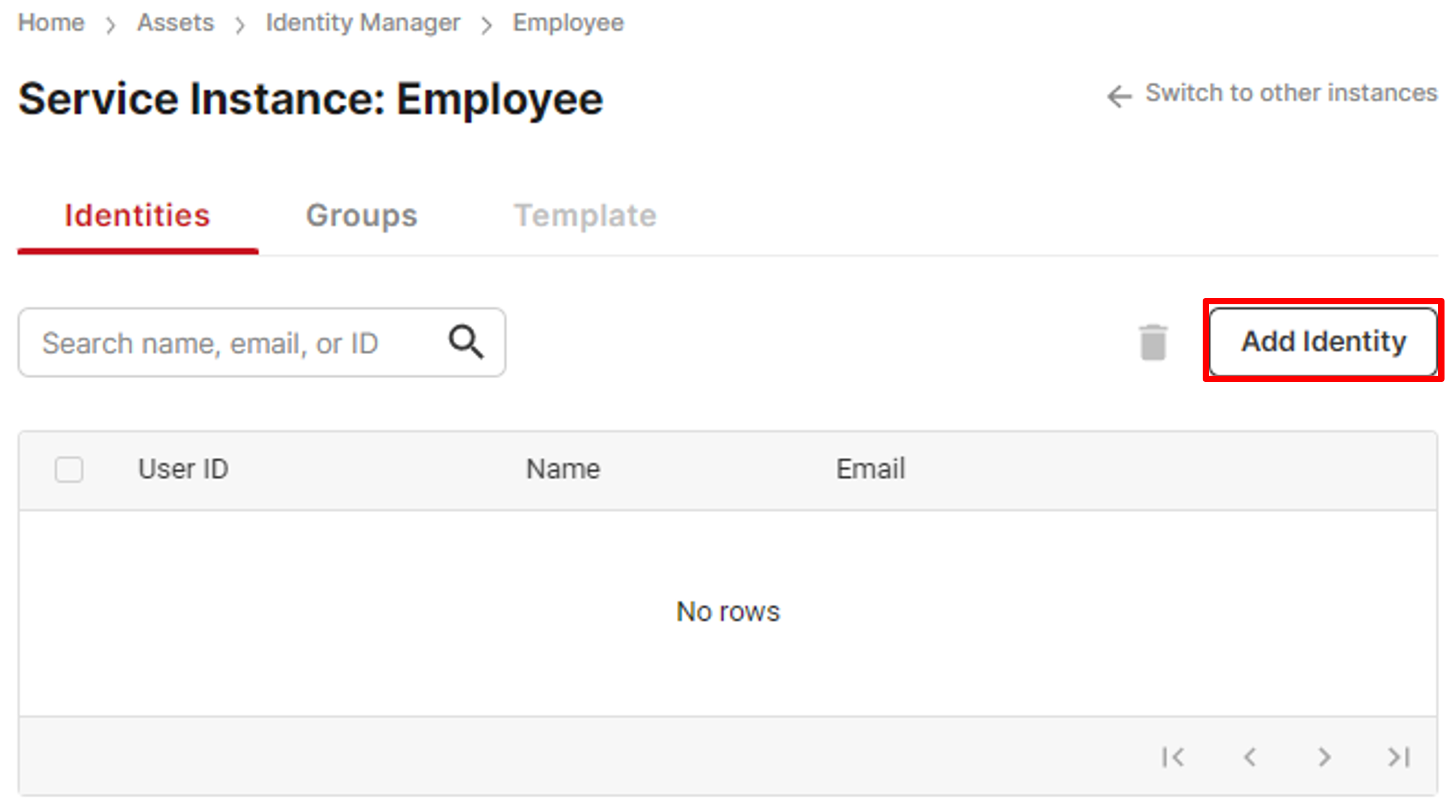
Identity list
- On the Add Identity screen, click the human icon to upload a photo of the end-user.
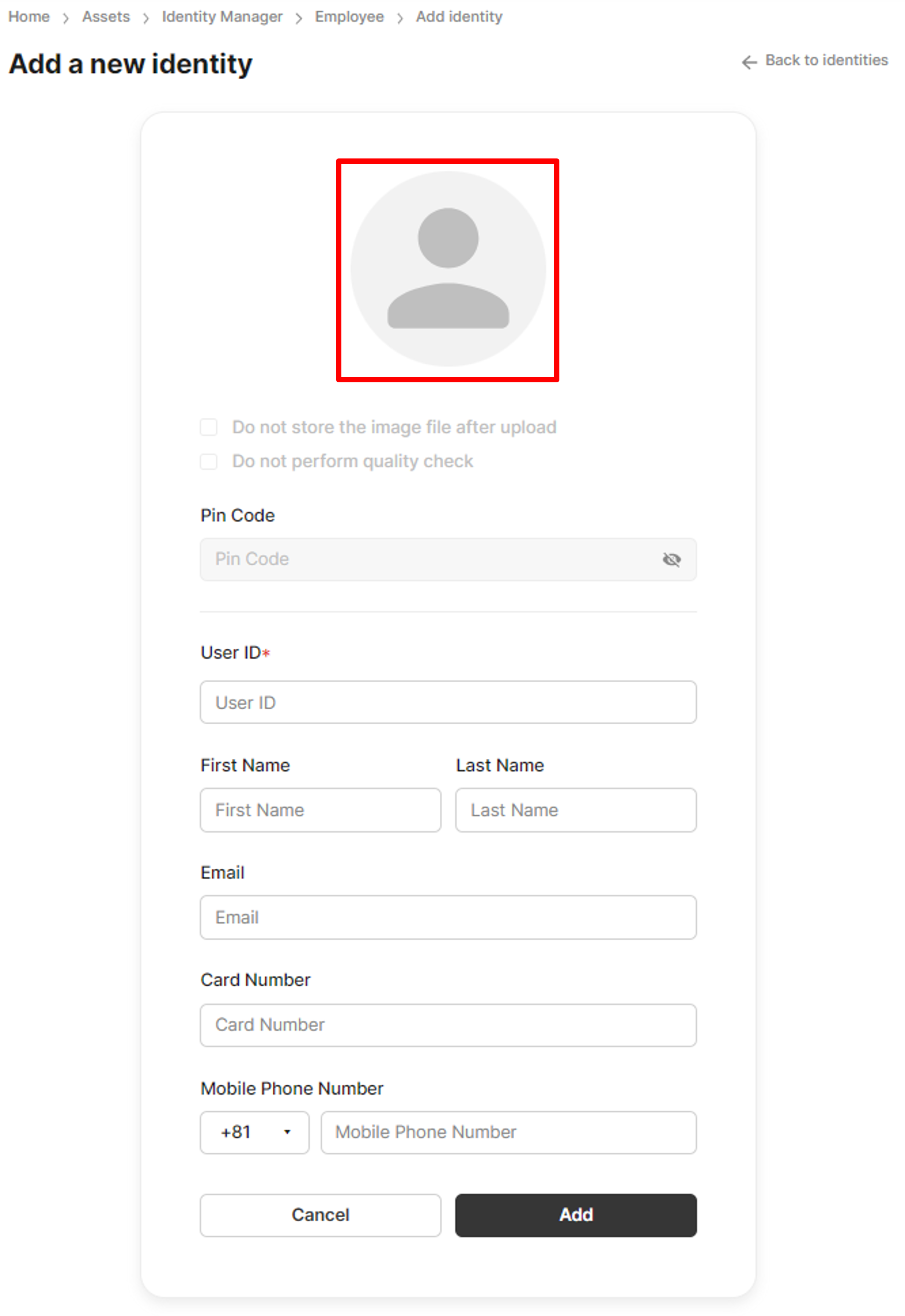
Upload a photo
- Fill up the other information fields, and click Add to finish adding an identity.
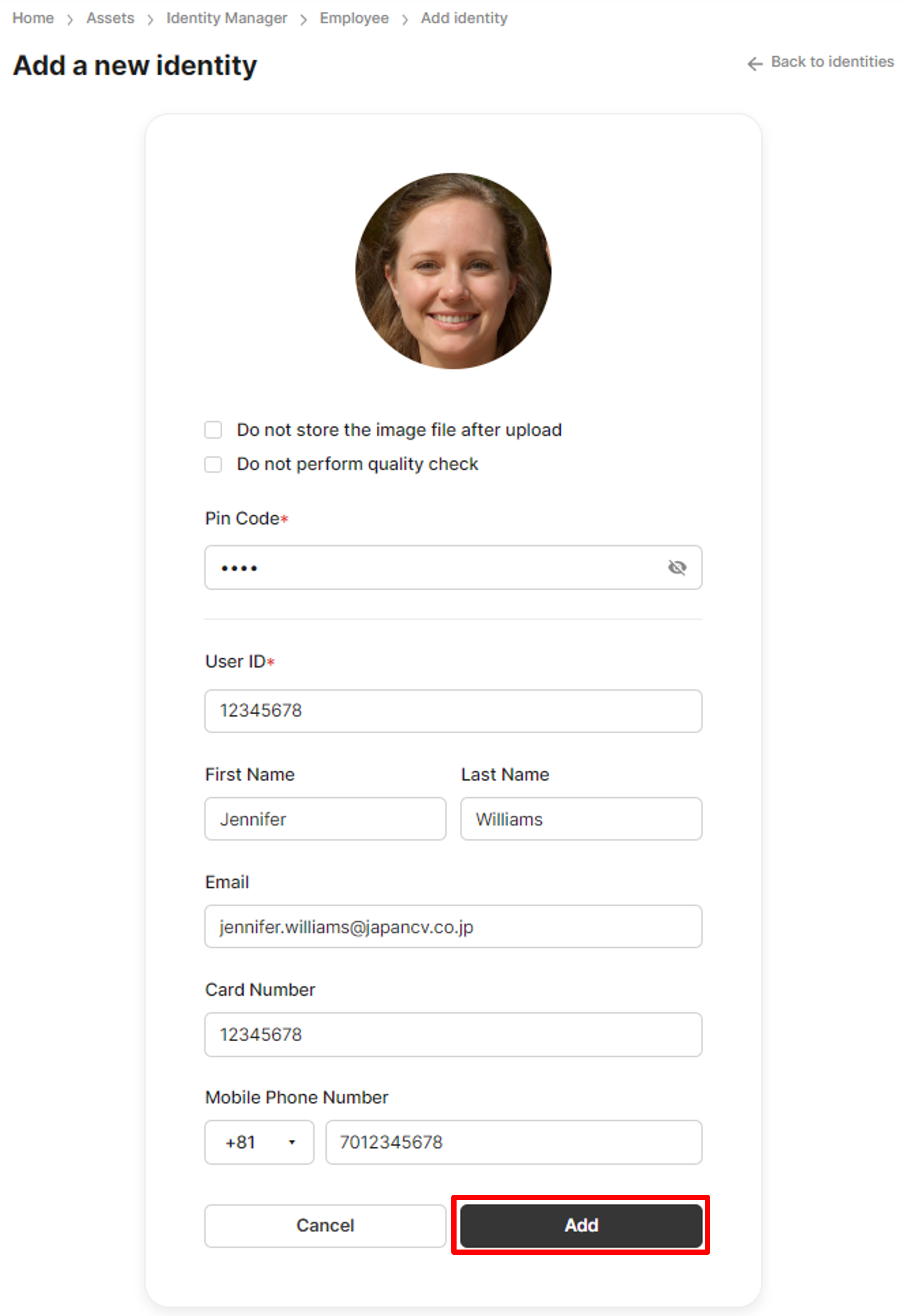
Add an identity
Register Windows account (End-user)
Each end-user requires this operation by scanning their face and entering the local Windows account information.
Set up Windows accounts
Ensure Windows accounts are correctly configured on the local Windows OS, and the end-user knows its login password.
Scan the face
On the next startup of the Windows OS, point the face to the camera and click the middle frame to open the camera.
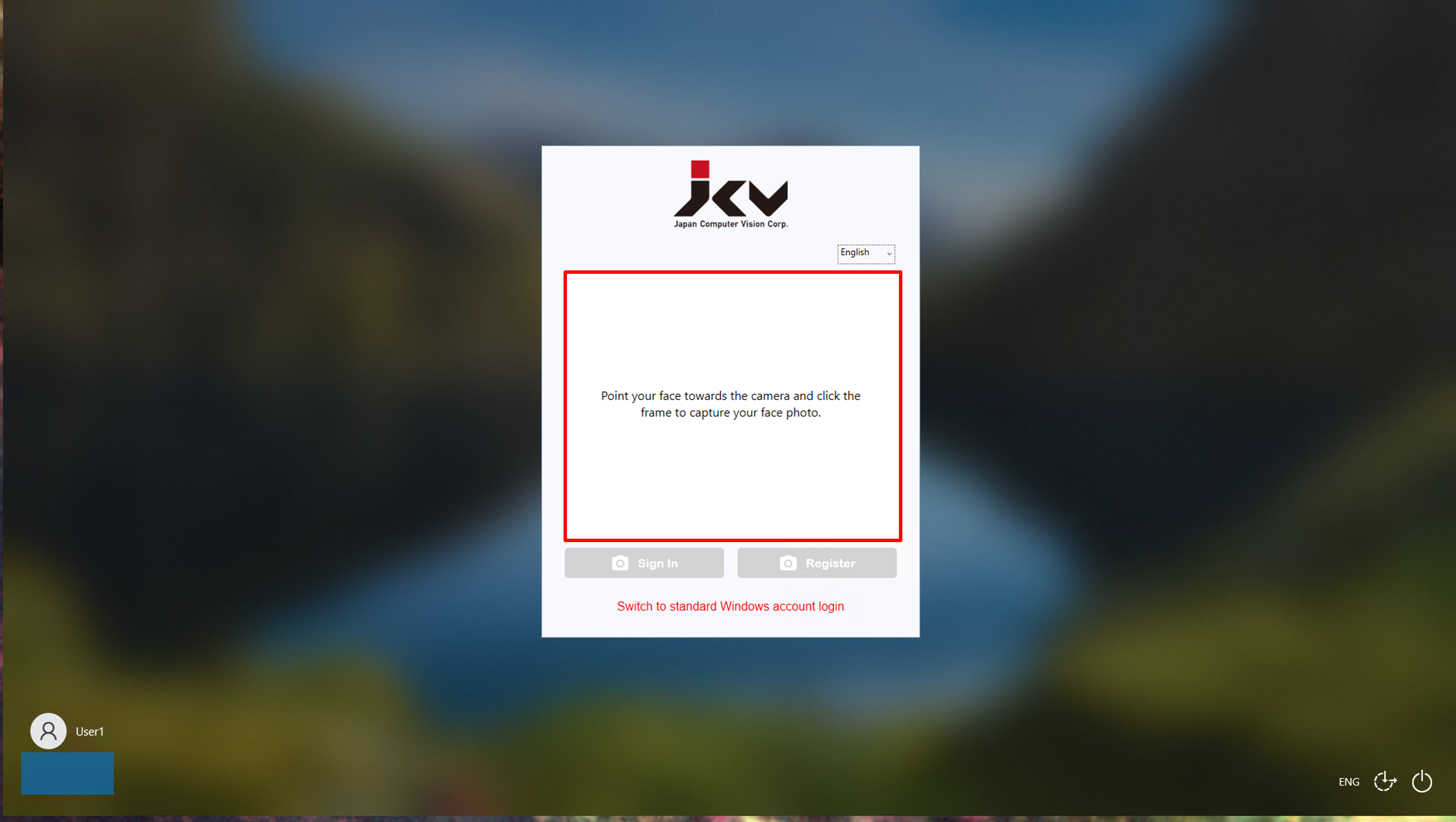
Initial screen
When ready, click Register.

Scan the face
Enter local Windows account and password
The application will set an initial username retrieved from the Windows OS. If the end-user wants to sign in with a different Windows account, click the Change button and type the account name.
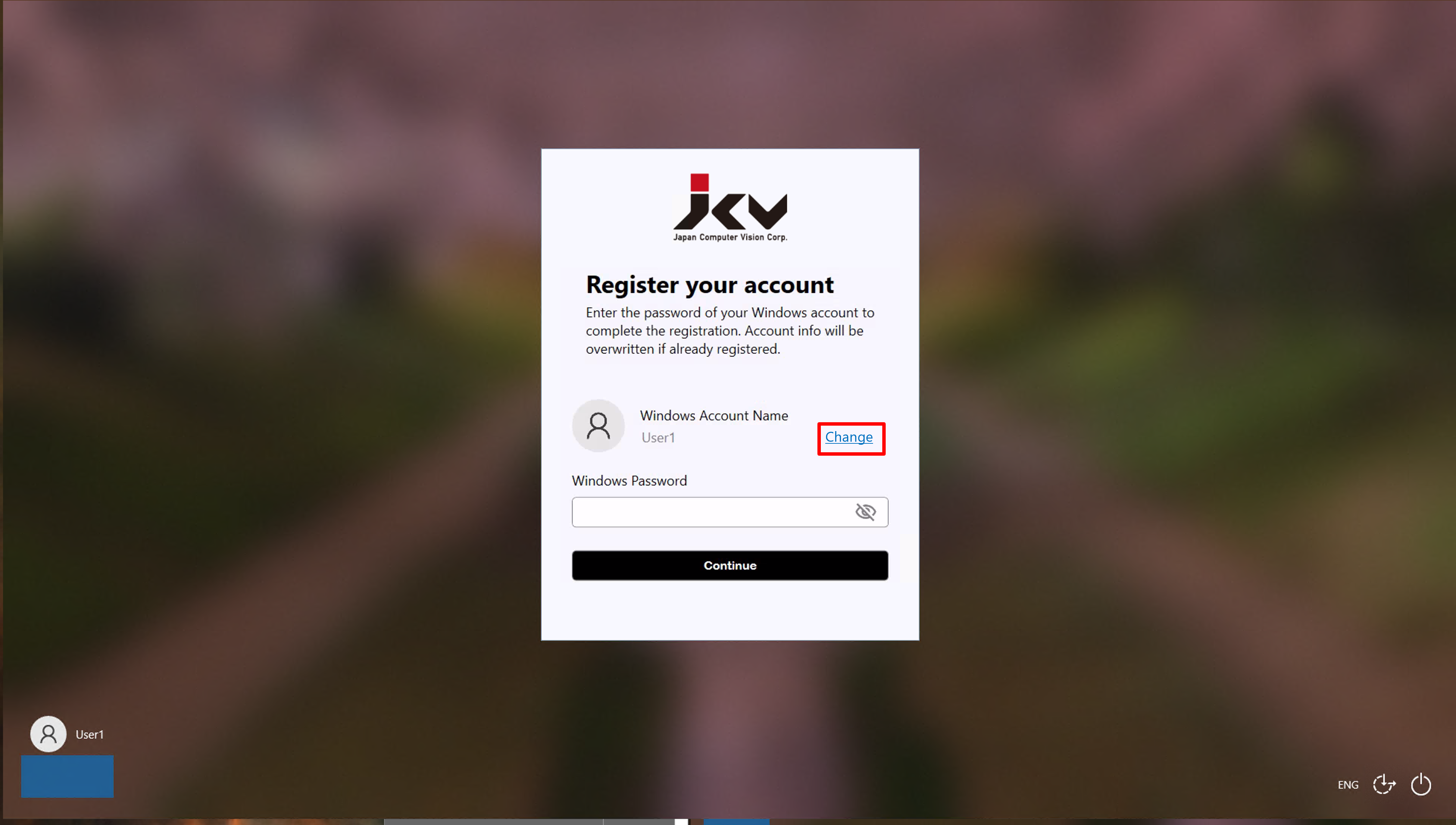
Change account name (Optional)
Then, type in the local Windows password and click Continue.
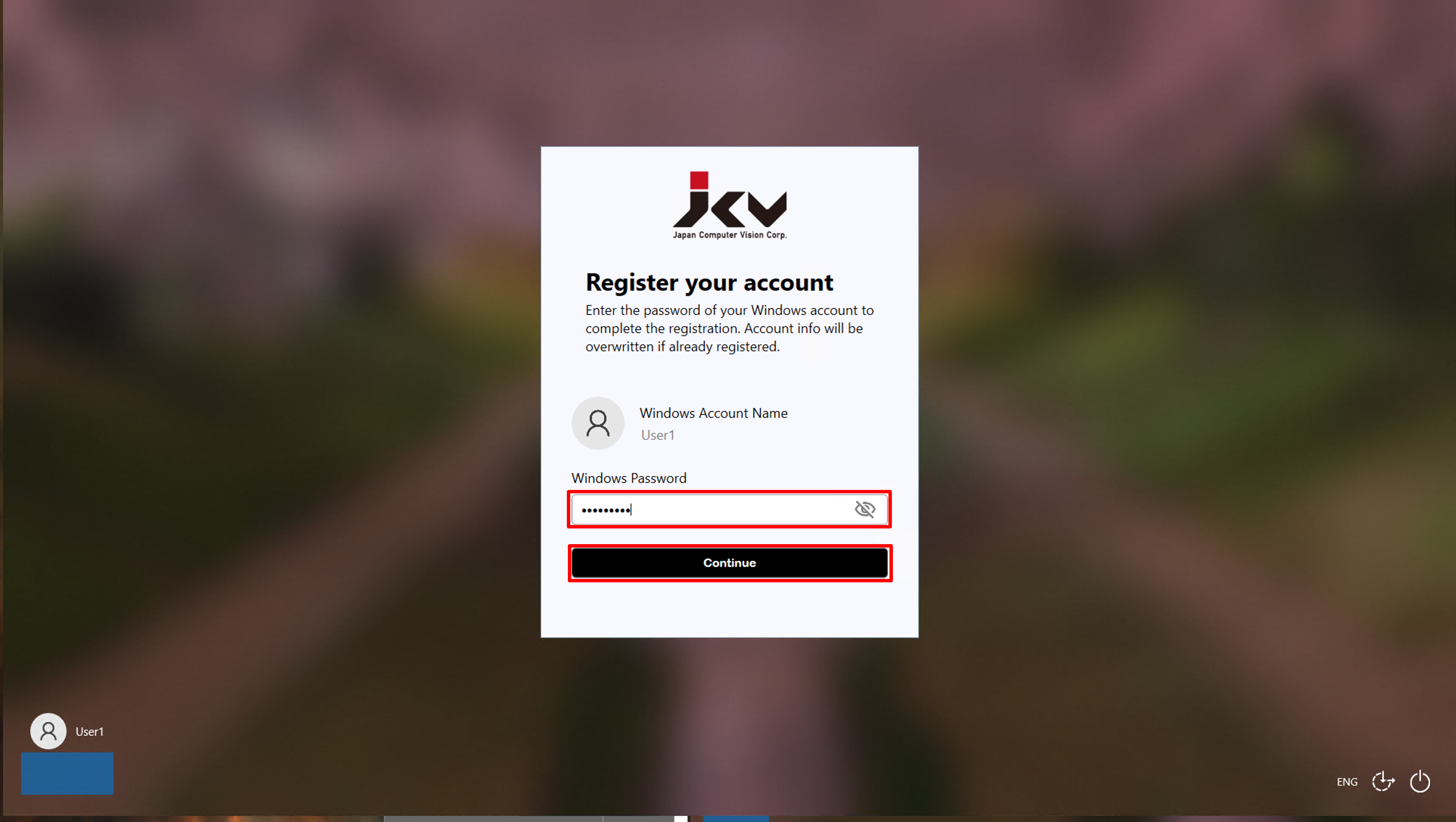
Register the account
If the Windows account name and password are correct, the end-user will successfully sign into the Windows OS.
Sign in to the OS after first registration
The next time the end-user signs into the Windows OS, scan the face as same but click Sign In instead.
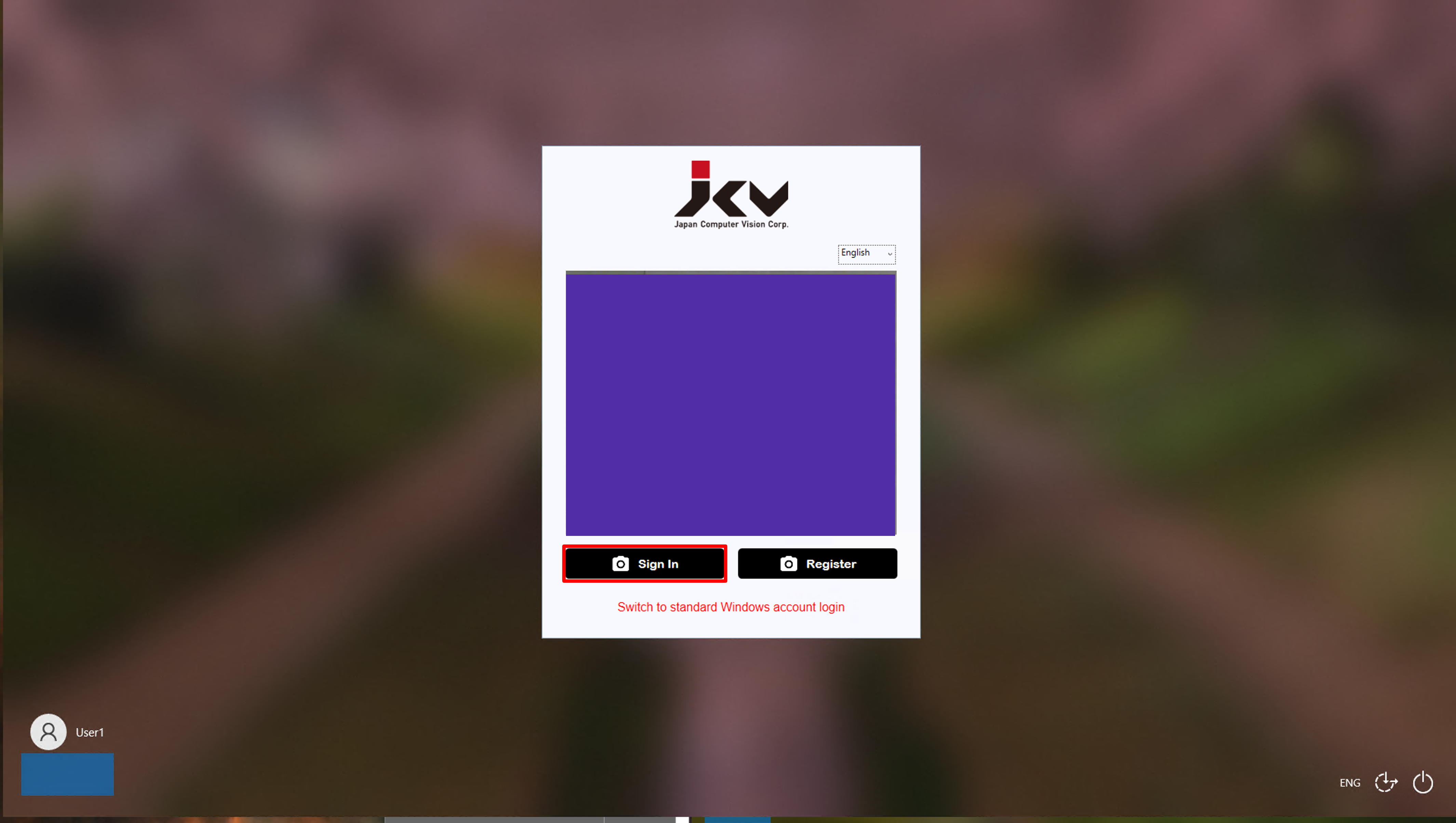
Sign In Windows
Updated 8 months ago
